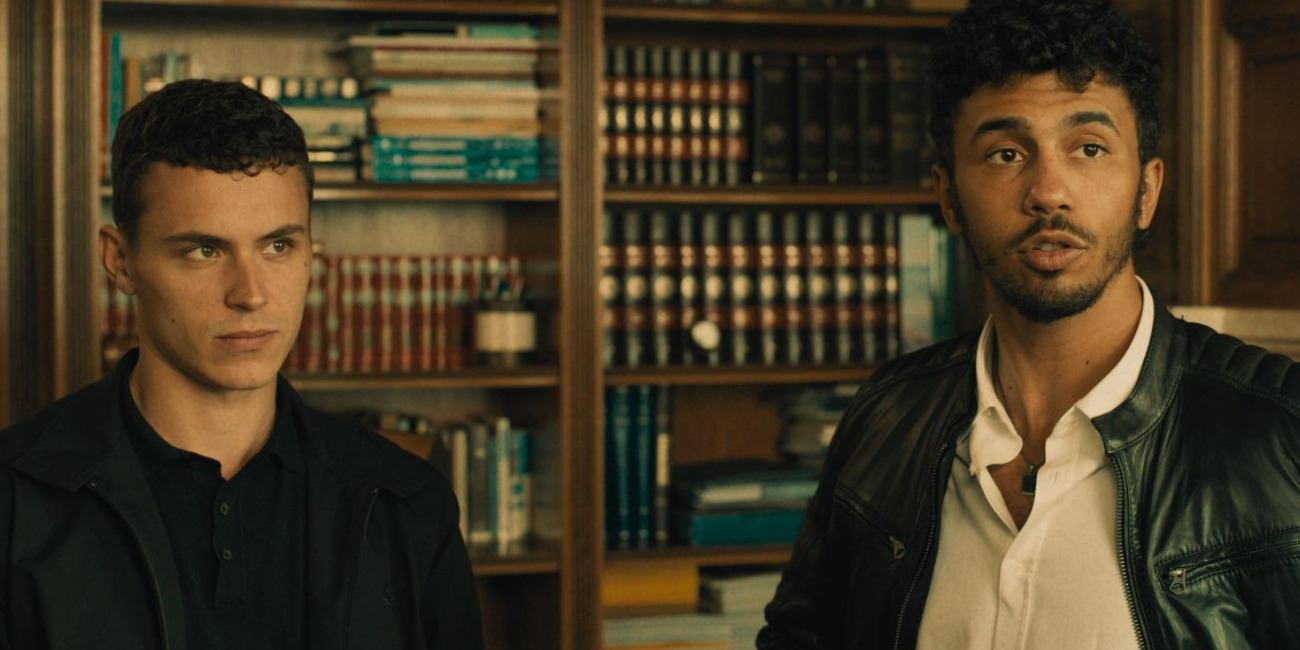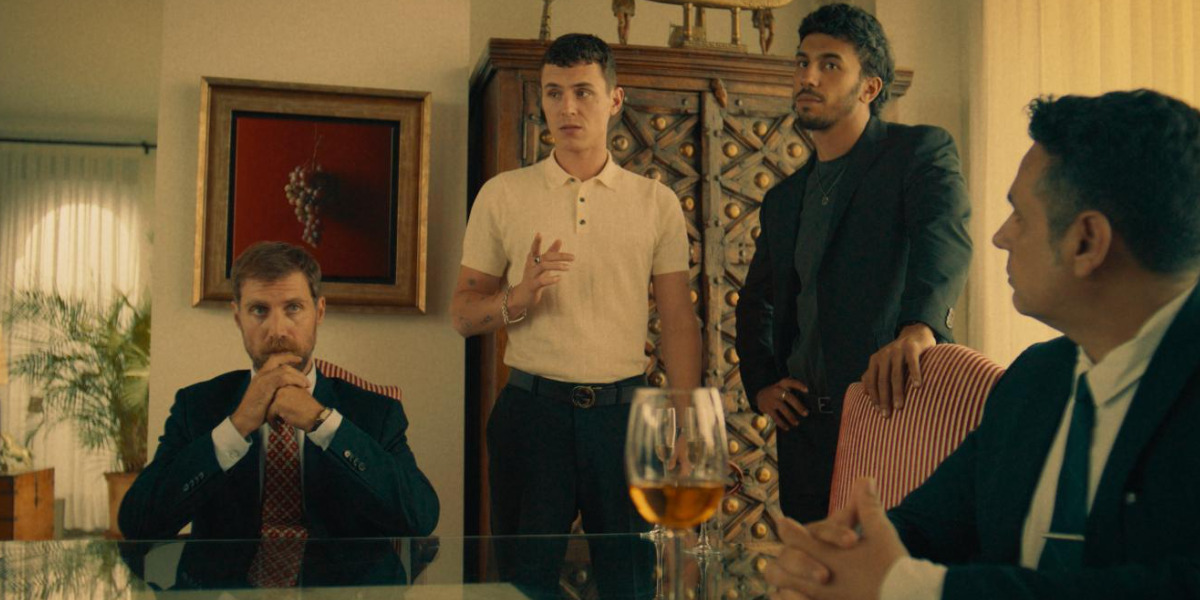‘Courier,’ Daniel Calparsoro’s Spanish crime thriller film, spans multiple European cities— from Madrid to Geneva— as it explores the story of gross corruption in Spain during the early 2000s. Iván Márquez, a small-town man with big ambitions, helms the narrative as he weasels his way into the existing group of people who profit off the era’s erratic real estate bubble through bribes and money laundering. However, with each new stolen euro earned, Iván’s greed grows, compelling him to cheat and backstab to climb up the ladder of corruption.
The film presents a thrilling account of an economically driven crime story as it explores a universal vice of greed and corruption, told through the perspective of one overtly eager man. However, with elements of tumultuous real-estate markets and banking frauds interwoven into the narrative, the film naturally compels the audience to wonder whether or not it holds a basis in real life.
The Courier: A True Story Told Through a Fictionalized Lens
The story charted within ‘The Courier,’ also known as ‘El Correo,’ equips the dramatized backdrop of real-life events. Therefore, several plot lines, including those revolving around high-scale money laundering scandals and the following police investigation into the same, retain relevance to reality. Inversely, while these situations hold a basis in real life, the same sense of realism dwindles when it comes to the central characters within the film. Therefore, more often than not, the characters end up influencing the true-story-inspired progression of the narrative through a fictionalized lens.

The film follows Iván Márquez, who forrays into the world of corruption as a courier simply transporting money from one place to another and earning a commission cut from it. As such, he finds himself working with people involved in the money laundering scheme centered around bribery practices within real estate construction and development. Consequently, the film’s base premise remains evidently tied to the real-life Malaya scandal, wherein a multitude of people, including city officials, were uncovered to be involved in a reported 2.4 billion euro embezzlement.
Even so, while the framework of the money laundering crime within the film retains similarities to real life, it also fictionalizes a substantial chunk of the story. Consequently, characters like Anne and Escámez, ringleaders of the corruption that Iván profits from, end up only referencing real-life individuals rather than personifying them. Furthermore, the protagonist, Iván, also holds shaky roots in reality. While the director, Calparsoro, confirmed in an interview with E Cartelera that Iván was modeled after a real person who was used as a reference, the identity of the character’s inspiration remains unnamed and unknown. As such, plenty of opportunity arises for fictionalization within the protagonist’s narrative.
Furthermore, Calparsoro was focused on creating an entertaining story about a relatable experience more than recording Spain’s economic 2000s scandal on the screen. As a result, many of Iván’s business dealings and encounters with experienced heralds of corruption, such as José Luis Ocaña and the international money launderer Yao Ming, emerge as a mix between reality and fiction. Even though these storylines have a context within reality, the details surrounding the central business dealings remain largely fictionalized. Even so, the filmmaker delved into historical research into records and accounts from the early 2000s to ensure authenticity in regard to the time period— especially in terms of the economic and real-estate crisis.
For the same reason, the historical context explored within the story remains relevant to the film’s themes as it presents a realistic instance when corruption overtook the public interest. Therefore, the film charts a story about reality without explicitly naming many names through the utilization— to its fullest potential— of the geographical relevance of Marbella in relation to the anti-corruption Operation Malaya.
By doing so, the narrative is able to delve into a story about Spain’s recent history without necessitating a biographical label. The same allows for plenty of creative freedom in constructing Iván and other characters’ backgrounds, storylines, and motives in a way that remains relatable and familiar to the audience. Ultimately, armed with realism and authenticity— and a fair amount of artistic liberty— ‘The Courier’ remains a dramatized story that is inspired by a real-life event.
Read More: Who Ratted Out Ivan in The Courier?


You must be logged in to post a comment.